William Jay Schieffelin (1866-1955) was the great great grandson of Jacob Schieffelin and of Hannah Lawrence, the poetess. William was therefore my wife’s fourth cousin, twice removed. As his middle name indicates, he was also the great great grandson of John Jay. William married Maria Louisa Vanderbilt Shephard (1870-1948), the daughter of Elliott Fitch Shephard and Margaret Louis Vanderbilt. The Vanderbilt fortune and the Schieffelin fortune combined nicely to support of life of both luxury and philanthropy.
William Jay Schieffelin
Maria Louisa Shepard
The marriage of William Jay and Maria Louisa on February 5, 1891 was a marvel of the Gilded Age.
It was one of the premier social events of the year. Before the ceremony, 600 guests attended a wedding breakfast in the two picture galleries of William Vanderbilt’s double mansion. Among the astonishing array of wedding gifts were a silver dinner service for twenty-four, given by Mrs. William Vanderbilt; two silver dishes sent by President Benjamin Harrison and the First Lady; and “a completely-furnished house, the gift of the bride’s mother,” as reported in The Times.
The house was on 57th street, just west of Fifth Avenue.
But commerce encroached, and Mrs. Shepard purchased a double lot at 5 and 7 East 66th St, next door to the former home of Ulysses S. Grant. She chose as architect Richard Howland Hunt, the son of Richard Morris Hunt. He designed a Parisian townhouse for the young couple.
Here are some photographs of the house when the Schieffelins occupied it with their eight children.
The Lotus Club moved in in 1947, and here are some of the rooms as they are today.
As would be expected, the house was the scene of lavish entertainments for the cream of New York’s social circles. When, for instance, on December 5, 1909 Mrs. Schieffelin gave a tea dance to introduce her daughter, Louise Vanderbilt Schieffelin to polite society, she was assisted by her sister, Mrs. Ernesto Fabbri, Mrs. James Henry Hammond and her daughter Emily Sloane Hammond, Cornelia Vanderbilt and Mrs. J. Cameron Clark.
The Schieffelins had a summer place, Islecote House, at Pointe d’Acadie on the Vanderbilt estate in Bar Harbor. The house was designed (1902) by Alexander Wadsworth Longfellow, nephew of the poet. Ten horses were stabled there so the whole family could ride.
Islecote House
One of Bar Harbor’s favorite sights was the entire Schieffelin family riding out the gate on horseback, each young Schiefflin on a successively smaller horse, with the youngest bringing up the rear on a pony.
The house and the rest of the Vanderbilt estate was sold in 1921 and torn down in 1940
 But then William Jay bought Tranquility Farm, now Schieffelin Point, away from the Bar Harbor social scene.
But then William Jay bought Tranquility Farm, now Schieffelin Point, away from the Bar Harbor social scene.
The Schieffelin Family
In 1925 the Schieffelins moved to an apartment at 620 Park Avenue.
660 Park Avenue
But life was not all tea dances and rides in Bar Harbor.
William Jay Schieffelin, Republican, Christian, Reformer,
- received his Ph.B. from the Columbia School of Mines, phi beta kappa
- received his Ph.D. with honors in chemistry from Munich
- was president of Schieffein and Co,
- was president of the National Wholesale Druggists Association
- was vice-president of the American Pharmaceutical Association
- was vestryman of St. George’s Church
- was manager of the American Bible Society
- was president of the American Church Missionary Society
- was president of the Laity League
- was chairman of the Social Service Committee of the Men and Religion Forward Movement
- was president of he American Mission to Lepers
- was president of the Huguenot Society of America
- was chairman of the Board of Trustees of Hampton Institute
- was chairman of the Board of Trustees of Tuskegee
- was president of the Armstrong Association
- was chairman of the Defense Committee for the Scottsboro Boys
- was Colonel of the 369th Harlem regiment
- was chairman of the Colored Men’s Department, YMCA
- was president of the Citizens Union
- was organizer of he Committee of One Thousand that drove Mayor Jimmy Walker from office
- was vice president of the Men’s League for Women’s Suffrage
- was president of the Serbian Child Welfare Association
- was chairman of the Volunteer Christian Committee to Boycott Nazi Germany
- etc. etc. etc.
Where to begin?
The Businessman
The history of Schieffelin and Co. was covered in the blog on the founder, Jacob Schieffelin. William Jay testified before a Congressional Committee and gave full-page interviews about the problem of addictive substances. He was asked why it was such a large problem in America. He responded:
The drug business is a very large industry. I suppose that half of it, in money received, comes from patent medicines. Americans believe in and practice self-medication. Some patent medicines, when in liquid form, contain alcohol. Others contain narcotics. Previous to the enactment of the pure food and drugs act of June 30, 1906, the manufacturers of parent medicines were not required to print on their labels the ingredients of their preparations.
But the 1906 law changed that and took the onus off of druggists to warn customers.
The law compels the manufacturer to print the habit-forming ingredients on every bottle of his medicine. If a customer can read he knows what he is taking. The publicity required by law has driven certain catarrh cures in which there is cocaine out of the market. Self-medication in the past, through ignorance, mostly, caused the use of so many habit-forming drugs as to become a serious danger to the country.
Although William Jay did not believe cannabis was as dangerous as cocaine he thought it might as well be classified with cocaine, where it remains to this day, with endless complications for law enforcement and conflict of laws.
The Churchman
William Jay was an active Episcopalian, vestryman at St. George’s Church. He was a proponent of the Social Gospel, the movement that proclaimed that Christians were supposed to be the light of the nations and help establish the Kingdom by ridding the earth of evils. The Social Gospel was especially directed to men, who did not see much point in pious exercises, but could be told that an active role in combatting evil was an expression of masculinity. That is why William was active in the Men and Religion Forward Movement. The Episcopal Church more than any other church was affected by this Movement and had the greatest increase in the percentage of men in its congregations.
The Soldier
During the Spanish American War William was a captain and adjutant in the Twelfth Regiment of the National Guard.
In the First World War he was a colonel of the 369th Infantry, the Fifteenth Regiment, a “colored” unit. Afro-American units had white officers. Black men wanted to fight, because they wanted to prove they were men, as masculine as the whites who regarded themselves as superior.
The Regiment consisted of African-Americans and African Puerto Ricans and was known for being the first African-American regiment to serve with the American Expeditionary Force during World War I. Before the 15th New York National Guard Regiment was formed, any African American that wanted to fight in the war either had to enlist in the French or Canadian armies. The regiment was nicknamed the Harlem Hellfighters, the Black Rattlers and the Men of Bronze, which was given to the regiment by the French. The nickname “Hell Fighters” was given to them by the Germans due to their toughness and that they never lost a man through capture, lost a trench or a foot of ground to the enemy. The “Harlem Hellfighters” were the first all black regiment that helped change the American public’s opinion on African American soldiers and helped pave the way for future African American soldiers.
White American soldiers refused to fight with this unit, so it was assigned to the French, who were delighted to have it.
Two Medals of Honor and many Distinguished Service Crosses were awarded to members of the regiment. The most celebrated man in the 369th was Pvt. Henry Lincoln Johnson, a former Albany, New York, rail station porter, who earned the nickname “Black Death” for his actions in combat in France. In May 1918 Johnson and Pvt. Needham Roberts fought off a 24-man German patrol, though both were severely wounded. After they expended their ammunition, Roberts used his rifle as a club and Johnson battled with a bolo knife. Reports suggest that Johnson killed at least four German soldiers and might have wounded 30 others. Usually black achievements and valor went unnoticed, despite that fact over 100 men from the 369th were presented with American and/or French medals. Among those honors Johnson was the first American to receive the Croix de Guerre awarded by the French government. This award signifies extraordinary valor. By the end of the war, 171 members of the 369th were awarded the Legion of Honor or the Croix de Guerre.
Recipients of the Croix de Guerre
The Lincoln Republican
William Jay was a Republican of the school of Lincoln and strongly advocated the rights and advancement of Afro-American citizens.
William Jay was the chairman of the board of trustees of Tuskegee and of Hampton Institute; he was also president of the Armstrong association in New York, named after General Armstrong, founder of Hampton Institute.
William Jay worked closely with Booker T. Washington in raising funds for the colleges. In 1906 William Jay presided over a fund-raising meeting at Carnegie Hall. The prime attraction was Mark Twain, who knew his audience and entertained them with a barbed wit directed at the type of wealthy New Yorker who was likely to be in the audience:
“There being nothing to explain, nothing to refute, nothing to excuse, there is nothing left for me to do, now, but resume my natural trade – which is, teaching. At Tuskegee they thoroughly ground the student in the Christian code of morals; they instill into him the indisputable truth that this is the highest and best of all systems of morals; that the nation’s greatness, its strength, and its repute among the other nations, is the product of that system; that it is the foundation upon which rests the American character; that whatever is commendable, whatever is valuable in the individual American’s character is the flower and fruit of that seed.
“They teach him that this is true in every case, whether the man be a professing Christian or an unbeliever; for we have none but the Christian code of morals, and every individual is under its character-building powerful influence and dominion from the cradle to the grave; he breathes it in with his breath, it is in his blood and bone, it is the web and woof and fibre of his mental and spiritual heredities and ineradicable. And so, every born American among the eighty millions, let his creed or destitution of creed be what it may, is indisputably a Christian to this degree – that his moral constitution is Christian.
Two Codes of Morals
“All this is true, and no student will leave Tuskegee ignorant of it. Then what will he lack, under this head? What is there for me to teach him, under this head, that he may possibly not acquire there, or may acquire in a not sufficiently emphasized form? Why, this large fact, this important fact – that there are two separate and distinct kinds of Christian morals; so separate, so distinct, so unrelated, that they are no more kin to each other than are archangels and politicians. The one kind is Christian private morals, the other is Christian public morals.
“The loyal observance of Christian private morals has made this nation what it is – a clean and upright people in its private domestic life, an honest and honorable people in its private commercial life; no alien nation can claim superiority over it in these regards, no critic, foreign or domestic, can challenge the validity of this truth. During 363 days in the year the American citizen is true to his Christian private morals, and keeps undefiled the nation’s character at its best and highest; then in the other two days of the year he leaves his Christian private morals at home, and carries his Christian public morals to the tax office and the polls, and does the best he can to damage and undo his whole year’s faithful and righteous worth.y.
“Without a blush he will vote for an unclean boss if that boss is his party’s Moses, without compunction he will vote against the best man in the whole land if he is on the other ticket. Every year, in a number of cities and states, he helps to put corrupt men in office, every year he helps to extend the corruption wider and wider; year after year he goes on gradually rotting the country’s political life; whereas if he would but throw away his Christian public morals, and carry his Christian private morals to the polls, he could promptly purify the public service and make the possession of office a high and honorable distinction and one to be coveted by the very best men the country could furnish. But now – well, now he contemplates his unpatriotic work and sighs, and grieves, and blames every man but the right one – which is himself.
“Once a year he lays aside his Christian private morals and hires a ferry boat and piles up his bonds in a warehouse in New Jersey for three days, and gets out his Christian public morals and goes to the tax office and holds up his hand and swears he wishes he may never-never if he’s got a cent in the world, so help him! The next day the list appears in the papers – a column and a quarter of names, in fine print, and every man in the list a billionaire and a member of a couple of churches.
“I know all those people. I have friendly, social, and criminal intercourse with the whole of them. They never miss a sermon when they are so as to be around, and they never miss swearing-off day, whether they are so as to be around or not. The innocent man can not remain innocent in the disintegrating atmosphere of this thing. I used to be an honest man. I am crumbling. No – I have crumbled. When they assessed me at $75,000 a fortnight ago, I went out and tried to borrow the money, and couldn’t; then when I found they were letting a whole crop of millionaires live in New York at a third of the price they were charging me, I was hurt, I was indignant, and said: ‘This is the last feather! I am not going to run this town all by myself.’ In that moment – in that memorable moment – I began to crumble.
Mark Twain Disintegrates
“In fifteen minutes the disintegration was complete. In fifteen minutes I was become just a mere moral sand pile; and I lifted up my hand along with those seasoned and experienced deacons, and swore off every rag of personal property I’ve got in the world, clear down to cork leg, glass eye, and what is left of my wig.
“Those tax officers were moved; they were profoundly moved. They had long been accustomed to seeing hardened old grafters act like that, and they could endure the spectacle; but they were expecting better things of me, a chartered professional moralist, and they were saddened. I fell visibly in their respect and esteem, and I should have fallen in my own, except that I had already struck bottom, and there wasn’t any place to fall to.
William Jay commented on “progress” in racial relationships (and this in 1925!)
As an example of the improved racial situation Dr. Schieffelin pointed out that the lynching of negroes in the country decreased 50 percent during the past year.
In 1932 William Jay became the chairman of the defense committee for the Scottsboro Boys.
The Scottsboro Boys were nine African-American teenagers accused in Alabama of raping two White American women on a train in 1931. The landmark set of legal cases from this incident dealt with racism and the right to a fair trial. The cases included a lynch mob before the suspects had been indicted, a frameup, all-white juries, rushed trials, and disruptive mobs. It is frequently cited as an example of an overall miscarriage of justice in the United States legal system.
On March 25, 1931, several people were hoboing on a freight train traveling between Chattanooga and Memphis, Tennessee. Several white teenagers jumped off the train and reported to the sheriff that they had been attacked by a group of African-American teenagers. The sheriff deputized a posse comitatus, stopped and searched the train at Paint Rock, Alabama and arrested the African-Americans. Two young white women also got off the train and accused the African-American teenagers of rape. The case was first heard in Scottsboro, Alabama, in three rushed trials, in which the defendants received poor legal representation. All but twelve-year-old Roy Wright were convicted of rape and sentenced to death, the common sentence in Alabama at the time for black men convicted of raping white women, even though there was medical evidence to suggest that they had not committed the crime.
With help from the Communist Party USA (CPUSA), the case was appealed. The Alabama Supreme Court affirmed seven of the eight convictions, and granted thirteen-year-old Eugene Williams a new trial because he was a minor. Chief Justice John C. Anderson dissented, ruling that the defendants had been denied an impartial jury, fair trial, fair sentencing, and effective counsel. While waiting for their trials, eight of the nine defendants were held in Kilby Prison. The cases were twice appealed to the United States Supreme Court, which led to landmark decisions on the conduct of trials. In Powell v. Alabama (1932), it ordered new trials.
The case was returned to the lower court and the judge allowed a change of venue, moving the retrials to Decatur, Alabama. Judge Horton was appointed. During the retrials, one of the alleged victims admitted fabricating the rape story and asserted that none of the Scottsboro Boys touched either of the white women. The jury found the defendants guilty, but the judge set aside the verdict and granted a new trial.
The judge was replaced and the case tried under a more biased judge, whose rulings went against the defense. For the third time a jury—now with one African-American member—returned a third guilty verdict. The case returned to the US Supreme Court on appeal. It ruled that African-Americans had to be included on juries, and ordered retrials.[4] Charges were finally dropped for four of the nine defendants. Sentences for the rest ranged from 75 years to death. All but two served prison sentences. One was shot in prison by a guard and permanently disabled. Two escaped, were later charged with other crimes, convicted, and sent back to prison. Clarence Norris, the oldest defendant and the only one sentenced to death, “jumped parole” in 1946 and went into hiding. He was found in 1976 and pardoned by Governor George Wallace, by which time the case had been thoroughly analyzed and shown to be an injustice. Norris later wrote a book about his experiences. The last surviving defendant died in 1989.
The Political Reformer
William Jay became the Civil Service Commissioner in 1896.
William Jay became vice present of the New York Society for the Suppression of Vice, although he was not as rigid as Comstock or Sumner. William Jay rejected tactics of entrapment, such as persuading a book dealer to sell a copy of Lady Chatterley’s Lover. He also persuaded Sumner to tolerate some writings on birth control. In a speech to Italian Presbyterians about the Men and Religion Forward Movement, William Jay said
If we are really going to follow the teachings of Christ and become “fishers of men,” we must go out into the world and mingle in friendly fashion with all those we come in contact with…There are many people already in the Church who don’t believe in playing cards, using tobacco, or going to the theater. But if doing these things is going to enable me to bring people who now do them into the Church I am going to do them
The men of his country are beginning to realize that they have cared too much about comfort and too little about character in the past. If you are going to join our movement, study the conditions in your district, prevent immorality, stop the bad moving picture shows, co-operate with the officers of the law, and never fail to vote.
He organized the Citizens’ Union
to secure the nomination and election of men who are not only honest and capable, but in fact represent the real sentiments of their constituencies.
William Jay grew more and more disgusted with the corruption of the Jimmy Walker administration in New York. There were the usual financial irregularities, which New York was not shocked by, but it learned that run of the mill corruption could lead to murder. He organized the Committee of a Thousand which eventually got rid of Jimmy Walker.
Increasing social unrest led to investigations into corruption within his administration, and he was eventually forced to testify before the investigative committee of Judge Samuel Seabury, the Seabury Commission (also known as the Hofstadter Committee). Walker caused his own downfall by accepting large sums of money from businessmen looking for municipal contracts.
One surprise witness in the Seabury investigation was Vivian Gordon. She informed the investigators that women were falsely arrested and accused of prostitution by the New York City Police Department. For this, the police officers were given more money in their paychecks. After her testimony, Vivian Gordon was suspiciously found strangled to death in a park in the Bronx. This event demonstrated to New Yorkers that corruption could lead to terrible consequences and that Walker might ultimately, in some way, be responsible for her death.
Mayor Jimmy Walker
With New York City appearing as a symbol of corruption under Mayor Walker, Governor Franklin D. Roosevelt knew he had to do something about Walker and his administration. Knowing that the State’s constitution could allow an elected mayor to be removed from office, Roosevelt felt compelled to act on this. But if he did this, he risked losing Tammany Hall’s support for the Democratic nomination. On the other hand, if Roosevelt did nothing, or let Walker off easy, the national newspapers would consider him weak.
Facing pressure from Governor Roosevelt, Walker eluded questions about his personal bank accounts, stating instead that the money he received were “beneficences” and not bribes. He delayed any personal appearances until after Roosevelt’s nomination for President of the U.S. was secured. It was at that time that the embattled mayor could fight no longer. Months from his national election, Roosevelt decided that he must remove Walker from office. Walker agreed and resigned on September 1, 1932, and went on a grand tour of Europe with Betty Compton, his Ziegfeld girl. Walker stayed in Europe until the danger of criminal prosecution appeared remote. There, he married Compton.
___________________
William Jay Schieffelin was without doubt a superior man. His intellect was demonstrated by his attaining a Ph. D. in Chemistry from Munich, which meant that he was not simply a brilliant chemist, and fluent in German, but fluent in scientific German. His energy, dedication, and zeal were inexhaustible, and he devoted much of it to helping the downtrodden.
Reformers can be tedious, and occasionally William Jay let slip what he thought of us lesser mortals, white and black:
The bad Southerner, the poor white trash, complain that they cannot get work owing to the competition of educated colored men…
The negro is not economically fitted to be a city dweller. His impulsive nature, for one thing, unfits him to meet the excitement and strain of city life.
But his Christianity preserved him from the dark folly of eugenics, which some members of his extended family fell into.
The morality of society, like any system, is subject to the Second Law of Thermodynamics, entropy. Any system, unless it receives energy from outside, tends to disorganization and chaos. William Jay was one of the people who put lots of moral energy back into the system. They are not easy to live with, but the world goes to hell without them.
Maria Louisa died on August 18, 1948; William Jay died on April 29, 1955. They are buried in the Schieffelin Mausoleum in the uptown Trinity Churchyard.

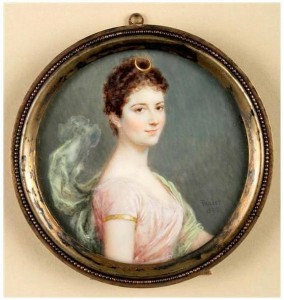

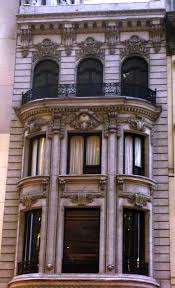
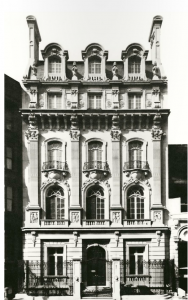
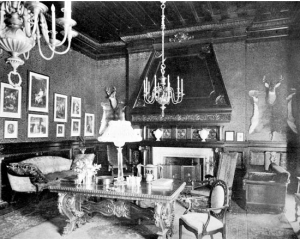
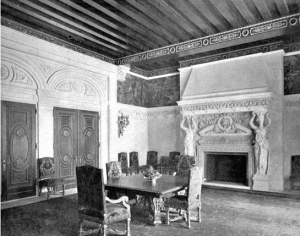
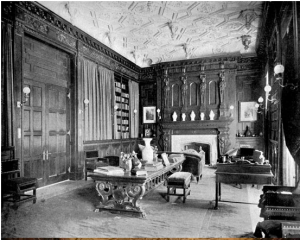
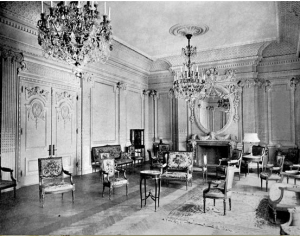
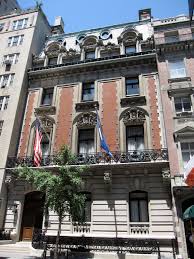
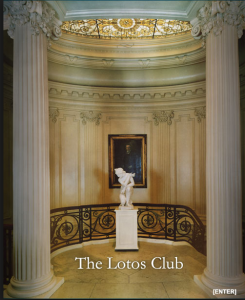
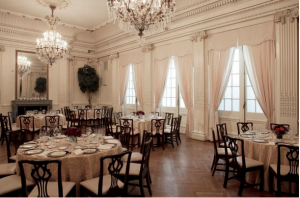
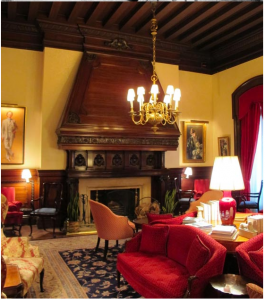
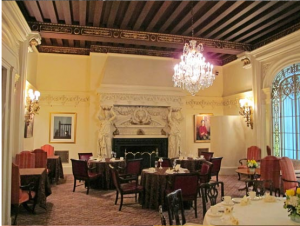
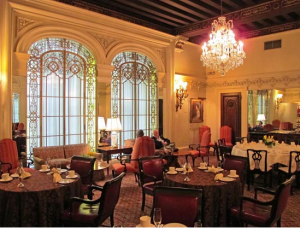
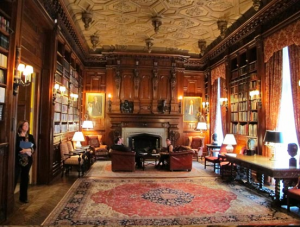
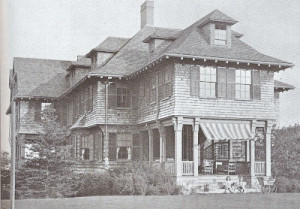
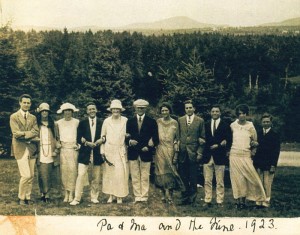
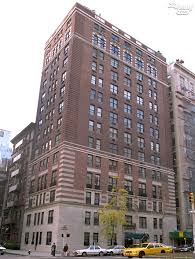
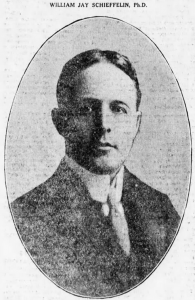
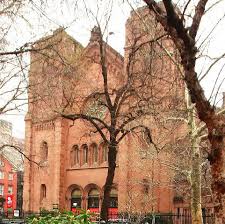
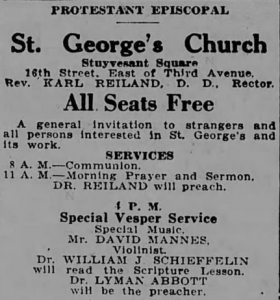
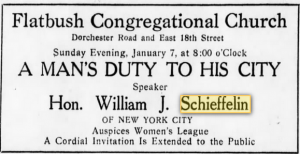
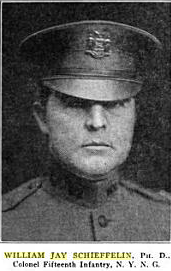
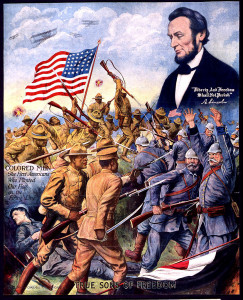
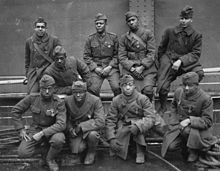
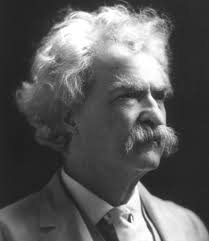
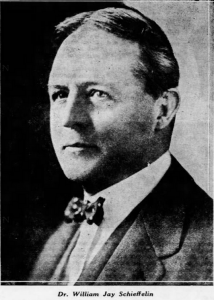
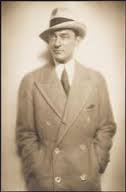
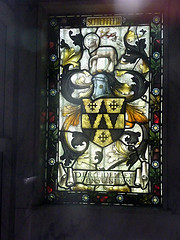


I have many books that belonged to William Jay Schieffelin or books he inscribed to his sister Eleanor Jay in 1897 and many other books all which are signed by the family. One is signed to Mary Jay Schieffelin from her Father John Jay who I Figured is a Grandson of statesmen and founding father John Jay it says from the Bedford House May 29, 1890 and this is all inscribed in the book American Statesmen John Jay. Can anyone tell me what I really have? or is the family looking for any of these books because I have many from this family.
Thank you for this wonderful report on the impact of William Jay Schieffelin, my great grandfather. To David, I can assure you that the Schieffelin family is interested in the books you have. Please feel free to reach out to me at ben.powell@gmail.com if you want to talk about old books.